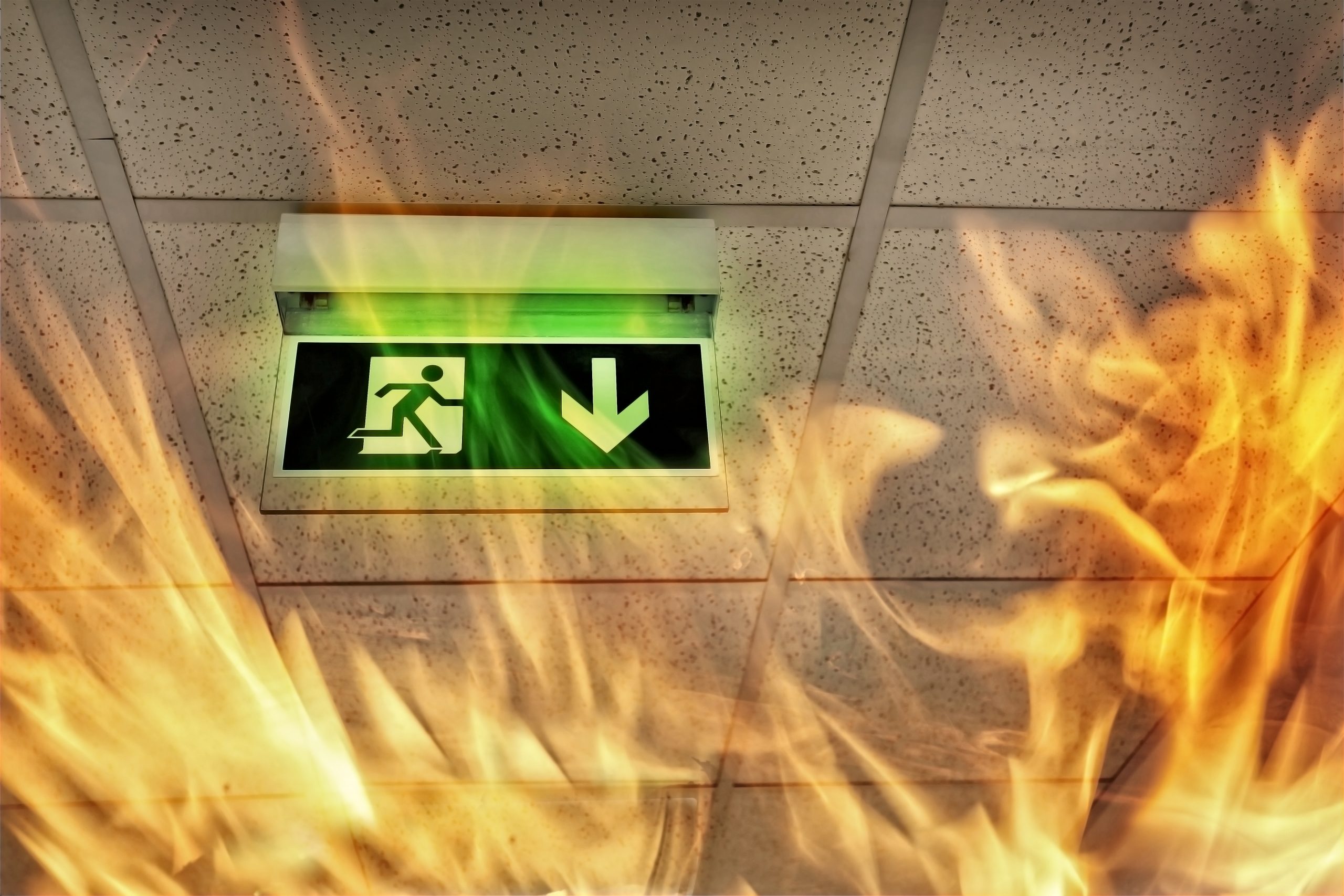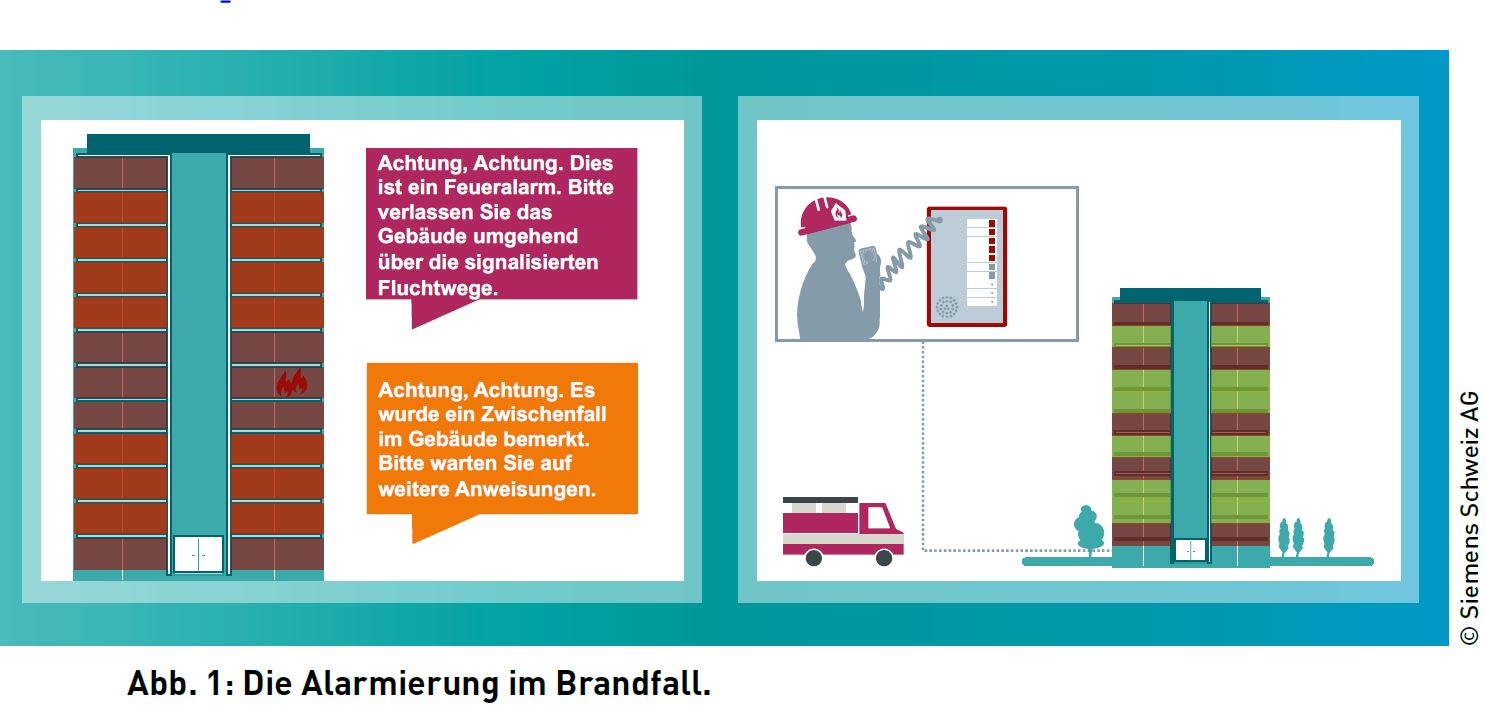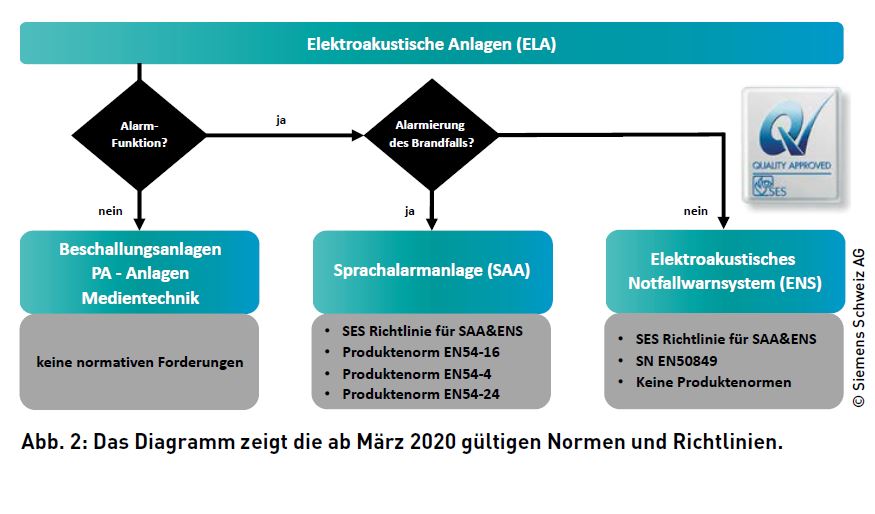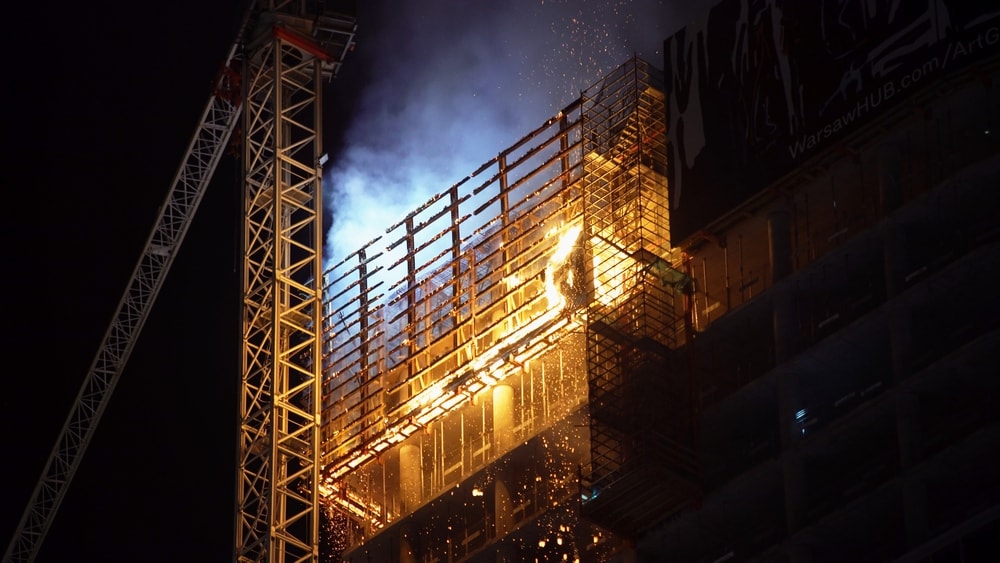Voice alerting - what's changing
For voice alarm systems and electroacoustic emergency warning systems, reference can still be made to the user standard SN EN 60849 until March 2020. After that, the situation in Switzerland will change.

Evacuating a building in case of an emergency is not an easy task, especially if it is a large or complex object. Often, such buildings are used for different purposes or people from different areas stay in them. In order to inform everyone simultaneously about a dangerous situation, a voice alarm system (SAA) or an electro-acoustic emergency warning system (ENS) provides helpful services. In this way, people can be encouraged in an orderly manner and in stages to rescue themselves and move out of the danger zone.
Emergency signaling with conventional signaling devices such as sirens is often ineffective in practice and is usually ignored or misinterpreted. Thanks to the alarm with clear voice announcement, people react faster and leave the object in a targeted manner. Thanks to a faster reaction in the event of an incident, people can be saved from harm. In addition, in the event of a fire, for example, the fire department can start more quickly with the actual task of containing and extinguishing the fire. Successful self-rescue is therefore also a fundamental prerequisite for damage limitation.
The situation in case of fire
In addition to various alarm scenarios such as amok, bomb threat or chemical accident, the alarm request in case of fire is probably the most common.
With regard to the functional scope, there are several options: an alarm by means of automatic triggering from the fire alarm system (BMA) or manual triggering, for example via a pushbutton. Both variants trigger a canned text message, which contains instructions on the correct behavior in several languages, depending on the event. In addition, the fire department can usually send direct and individual instructions to the building via a fire department call station.
If the voice alarm system is automatically triggered by the fire alarm system, the pre-alarm, which is otherwise carried out by alarm units of the fire alarm system, can also be sent via the loudspeakers in addition to the automatic triggering of the safety text. The monitoring scope of the SAA must be at least as high as that of the BMA. These synergies can save costs in practice.
In any case, in addition to the clearly defined functional scope of the system, it is crucial that the system is part of the fire protection concept (alerting in case of fire) or the safety and evacuation concept (alerting for other events).
Current status regarding standards
At first glance, it is not entirely clear which directive or standard applies with regard to the construction of a plant. In addition, there are other standards that must be complied with when it comes to equipment certifications. However, this depends on the function of the plant.
Until March 2020, reference can be made to the user standard SN EN 60849; it does not distinguish exactly for which scenario the plant is used. From March, however, the situation in Switzerland will change.
The subsequent standard SN EN 50849 describes only the use of so-called electroacoustic emergency warning systems. In addition, the standard clearly mentions that these must not alarm the fire. It is not relevant whether the alarm is triggered manually or automatically from the fire alarm system. Only voice alarm systems may be used for alarming in case of fire. These must also comply with the product standards of the EN 54 series (EN 54-16 central components, EN 54-4 power supply equipment, EN 54-24 loudspeakers). Figure 2 shows an overview of the practical application.

Which standards are valid for alarming in case of fire?
A new standard describing the use of voice alarm systems throughout Europe is not available. Available is the EN 54-32, which is in the state of a technical specification (TS).
It is currently not foreseeable if and when EN 54-32 will become a valid standard. At present, it can be assumed that this will not be the case in the near future.
For this reason, the use of the guideline for SAA and ENS of the Swiss Association of Security System Installers (SES) is recommended. It describes the planning, project planning, installation, commissioning, use and maintenance of SAA and ENS. The guideline also addresses the requirements and needs of Switzerland. It has been defined by the Association of Cantonal Fire Insurers (VKF) as a "state of the art paper".
The SES guideline is currently being revised to reflect the new standard situation.
The quality of safety systems is crucial
The aim of the SES guideline is to ensure that safety systems of this type are designed, built, installed and approved with the necessary quality.
In the past, there have often been ambiguities, particularly with regard to acceptance. Up to now, the plants were not or only very rudimentarily dealt with in an acceptance test. Moreover, it was often carried out without specific test criteria. Depending on who led the acceptance, these differed greatly in terms of content.
For this reason, an inspection and acceptance protocol was recently published by SES. If an SAA or ENS is constructed in accordance with the association's quality requirements, the system can be accepted with the help of the protocol and subsequently receives the SES Quality Approved seal. This is necessary to guarantee quality assurance, to ensure that the systems are ready to function in an emergency and to provide proof of compliance with the applicable regulations for SAAs and ENSs. The protocol includes all test points specified by the standards.
From now on, it will be easier for planners and installers to have the quality of the systems checked. They can refer to the new document without further effort or request this from the installer. The quality of systems is an important concern for SES, and the association is convinced that this will be guaranteed to a high standard thanks to the unified protocol.
The test and acceptance protocol is available in three languages on the SES homepage (www.sicher-ses.ch/de/quality-approved/copy_of_sprachalarmierung).

Conclusion
Voice alarm systems and electro-acoustic emergency warning systems involve a great deal of complexity in planning and projecting. In addition, the "acoustics" factor must be mastered. Moreover, the requirements of the two systems are not identical. When used in the event of a fire, the requirements are significantly higher.
The introduction of the SES guideline for SAA and ENS has eliminated many ambiguities. A document has been created that should be of help to all persons dealing with the field in Switzerland.
In addition to a serious execution planning of the plant, a concept as well as the assurance that the plant is coordinated with the fire protection or safety concept are also very important. The SES guideline also helps with these points.
Author Box
Christian Gschwend, Member of the Technical Working Committee, SES Association
Reto Tschümperlin, Chairman of the Technical Working Committee, SES Association









